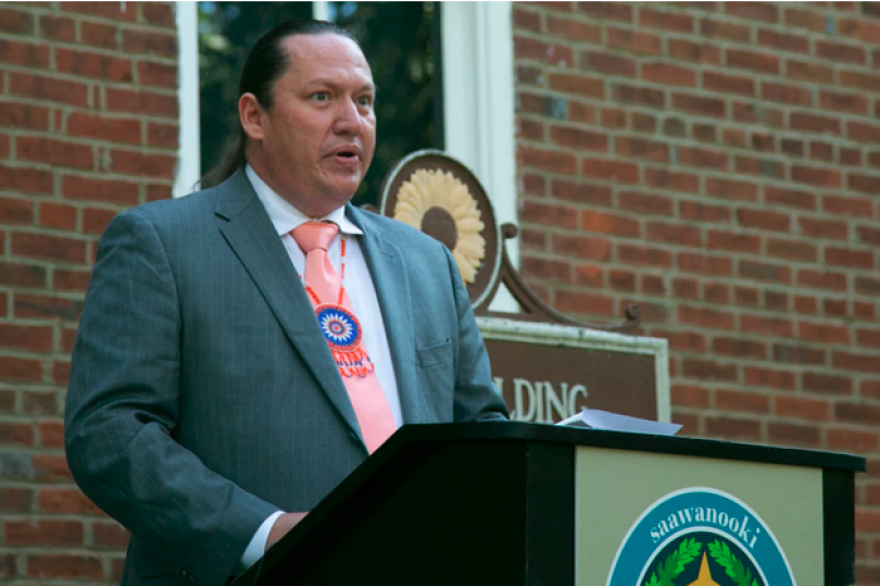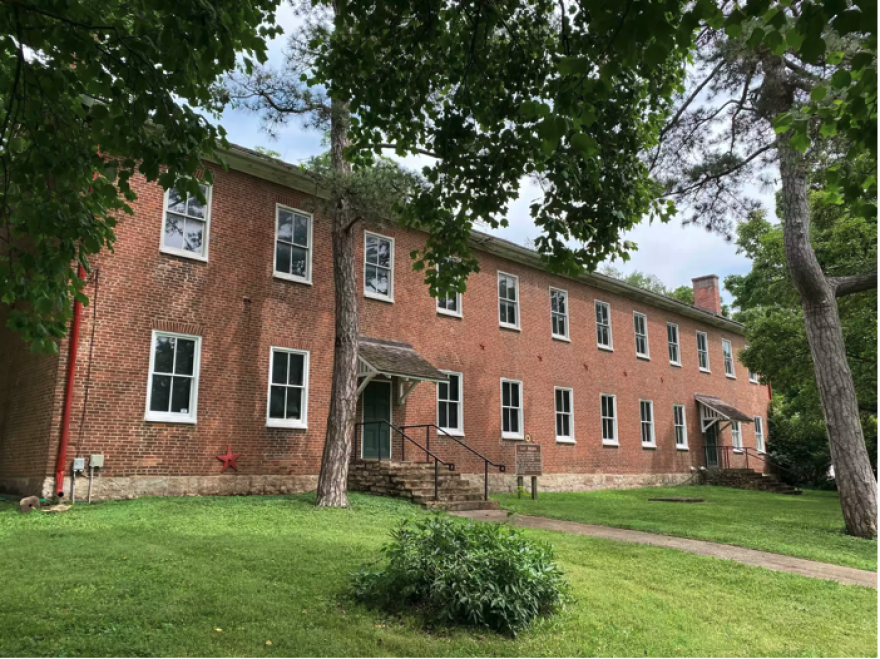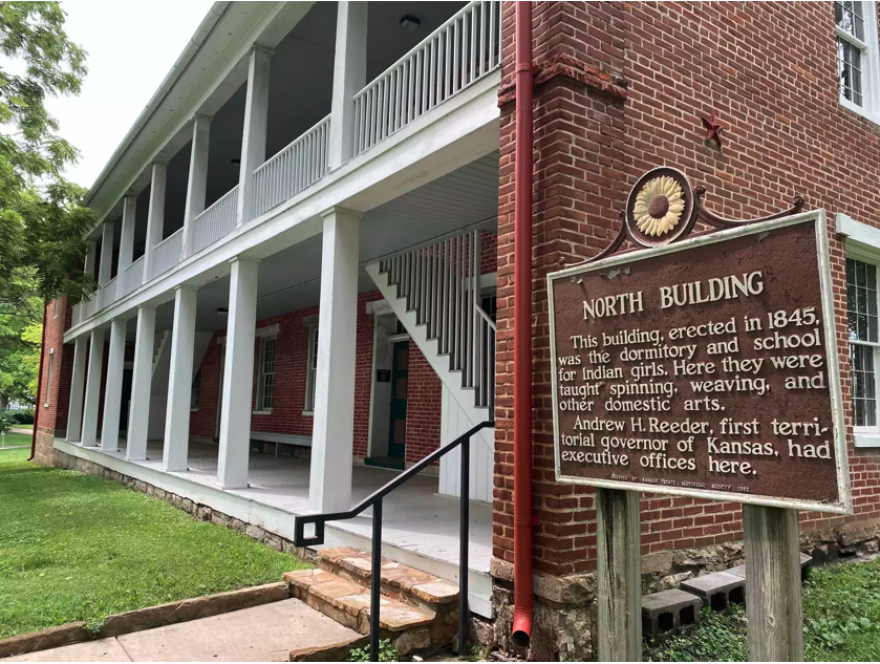The Kansas Historical Society is moving forward with plans to conduct a ground penetrating radar study this fall at the Shawnee Indian Mission in Fairway in an ongoing effort to search for possible unmarked graves of Native American children on one of Kansas’s most well-known historic sites.
The latest announcement, however, was met with wariness from the Shawnee Tribe, who in an official statement Friday morning said they are worried about “potential deficiencies” in KHS’s study and have “serious concerns” about the broader motives of the project.
On Thursday, the city of Fairway, which helps manage the historical site that is owned by KHS, sent an email announcing plans for the new radar study being conducted by KHS, which will look at the mission’s 12 acres of land to determine what, if anything, is underground.
The email said four Native American children were reported to have died while attending the school, according to the email message.
Still, historians believe “it is unlikely that the students who died at the school would have been buried on the Mission’s grounds, especially on the remaining 12-acres,” the city’s message reads.
“While the Kansas Historical Society has no documentation that suggests unmarked graves may be located on the remaining 12 acres, all agree that pursuit of fact-based knowledge can benefit everyone,” the Fairway email said.

The Shawnee Tribe and the city of Fairway entered a partnership to investigate the history of Shawnee Indian Mission last year after Shawnee Tribe Chief Ben Barnes raised the possibility of unmarked graves of Native American children existing somewhere on the grounds of the former boarding school.
The effort in Fairway comes amid a national push to discover more about former Indian boarding schools, including the Department of Interior’s initiative to review federally-funded schools — which the Shawnee Indian Mission school was not.
Thomas Johnson, the county namesake who owned slaves, also operated Shawnee Indian Mission Manual Labor school.
The school was built on Shawnee Tribe land after the tribe was forcibly removed from lands in the east in the 1820s and 1830s.
Historical records indicate about one-third of the Native American children who attended the school in the pre-Civil War years in which it was in operation were from the Shawnee Tribe.
Other children at the school came from 22 other tribes, including the Cherokee, Kaw, Ottawa and Osage.
At its height, nearly 200 Native American children attended the Shawnee Indian Mission Manual Labor school, according to the state historical society.
A contract outlining details of the ground penetrating radar study between the University of Kansas Center for Research and KHS sent to the Post by KHS officials states the field work at the Mission should begin within 60 days of Sept. 1, 2022.
Alicia Reed, director of research administration at KU, signed the contract on behalf of the center for research. There is a line for a state historic preservation officer signature, but it is not signed in the copy provided to the Post.
The Shawnee Tribe — nor any other tribe — is not specifically named or listed in the contract, and does not have a signature line in the contract.
Field work should be concluded by April 30, 2023, with a draft report submitted to the state historic preservation office, according to the contract.
A final survey with the preservation office’s comments will be submitted by July 31, 2023.
A completion report and all final products will be submitted to the preservation office by Aug. 31, 2023, according to the contract.
The report is to include coordination with tribes and others who request consultation, according to the contract.

Maggie Boyett, Shawnee Tribe spokesperson, sent the post the following statement regarding whether the tribe is involved in the ground study at this time:
"The Shawnee Tribe was coerced into ceding 2000 acres of land and paying for this site to be built. The Shawnee Indian Manual Labor Boarding School site may be an archeological curiosity for some, but for the Shawnee people, it has deep importance and stands as a monument to Shawnee perseverance."
"We have requested formal consultation to address serious concerns about the motives of this project, potential deficiencies in the process that may render incomplete findings, and what plans may be for utilizing any results from the project."
Nathan Nogelmeier, Fairway city administrator, told the Post via email that KHS reached out to several tribes, including the Shawnee Tribe, about this GPR study.
Nogelmeier said “those conversations are ongoing, but the city has not participated in them since the contract for the work is not a city contract.”
Additionally, Nogelmeier confirmed that the three partners referenced in the email message regarding the GPR study are the city, KHS and the Shawnee Indian Mission Foundation.
When asked about whether the partnership between the tribe and the city is still active, Nogelmeier said no formal partnership agreement was established.
The Shawnee Tribe did not immediately respond to the Post’s questions about whether it is involved with the study, or with the city partnership.
This story was originally published on the Shawnee Mission Post.

